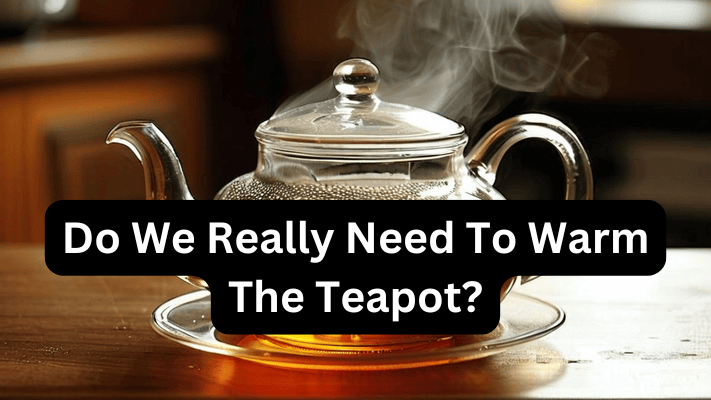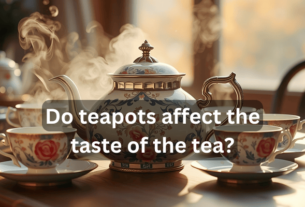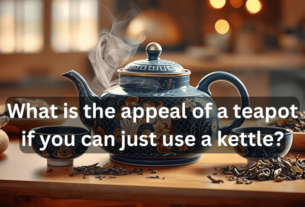Introduction
Picture this: you’re preparing for a comforting cup of tea, your favourite loose leaves set aside, the kettle bubbling away. As you reach for your teapot, a question arises—should you warm it first? For many tea enthusiasts, warming the teapot is a sacred ritual, a practice steeped in tradition that promises to enhance the overall experience of tea brewing. But in our fast-paced world, where convenience often takes precedence, it’s worth examining whether this age-old practice is truly necessary.This article will equip you with the knowledge and understanding to make an informed decision about the role of preheating in your own tea-brewing endeavours.
The Tradition of Warming the Teapot
Historical Context:
The practice of warming the teapot can be traced back to ancient tea-drinking cultures. In countries like China and Japan, tea is not merely a beverage but a ritual that embodies respect, mindfulness, and artistry.
In traditional Chinese tea ceremonies, for instance, the teapot is pre-warmed to enhance the brewing process. This practice is not just about temperature; it also demonstrates the tea maker’s commitment to quality and respect for the tea leaves.
In Japan, the tea ceremony (chanoyu) emphasises preparation and attention to detail, where every step—including warming the teapot—is integral to the experience.
Cultural Significance:
Warming the teapot serves as a bridge between cultures, uniting tea drinkers in a shared appreciation for the nuances of brewing.
In many Asian cultures, tea is a communal activity, and the act of warming the teapot signifies hospitality and care. It reflects the values of the culture, where every detail is important, and the experience is meant to be savoured.
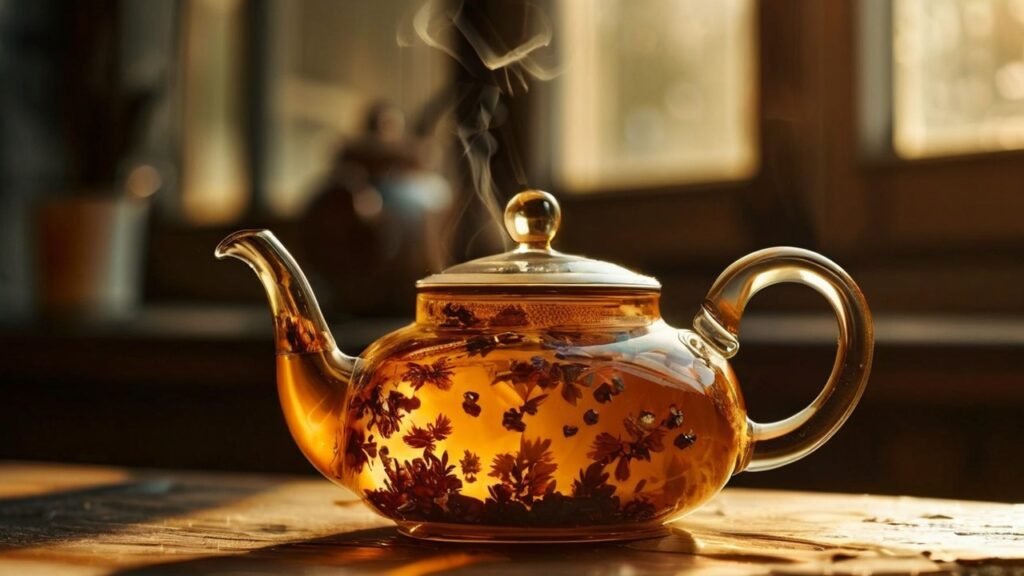
NOTE: What does a silver teapot taste like?2024
For Western tea drinkers, particularly in Britain, the practice of warming the teapot is often associated with the afternoon tea tradition. It adds an element of formality and elegance to the ritual, enhancing the enjoyment of both the tea and the accompanying treats.
The Science of Preheating a Teapot
At the heart of the debate surrounding the necessity of preheating a teapot lies a deeper understanding of the science and physics that govern the tea-brewing process.
By delving into the principles of heat transfer and the specific properties of the materials used in teapot construction, we can gain valuable insights into the role that preheating plays in ensuring the optimal temperature and flavour extraction of the tea.
1. Heat Transfer and Thermal Equilibrium:
The primary function of preheating a teapot is to establish a state of thermal equilibrium between the vessel and the boiling water that will be used to brew the tea.
This concept of heat transfer is rooted in the fundamental laws of thermodynamics, which dictate the movement of thermal energy from hotter to cooler objects.
When you pour boiling water into a cold teapot, the sudden introduction of high-temperature liquid creates a significant temperature differential between the vessel and the water.
This disparity can lead to a rapid and uneven cooling of the water, as the ceramic material of the teapot quickly absorbs the thermal energy, resulting in a suboptimal brewing temperature and potentially affecting the extraction of the tea’s aromatic compounds and flavour profile.
2. The Importance of Material Properties:
The specific material composition of the teapot also plays a crucial role in determining the importance of the preheating ritual.
Different ceramic materials, such as porcelain, stoneware, and cast iron, exhibit varying degrees of thermal conductivity and heat retention, which can significantly impact the need for and effectiveness of preheating.
Porcelain, for example, is a relatively poor conductor of heat, meaning that it can take longer to warm up and may be more susceptible to rapid cooling when the boiling water is introduced.
In such cases, preheating the teapot can help to mitigate these thermal challenges, ensuring a more stable and consistent brewing temperature.
Different Approaches to Warming the Teapot
The Traditional Method:
The traditional method of warming a teapot typically involves rinsing it with hot water before brewing. This can be done by filling the teapot with hot water, allowing it to sit for a few moments, and then discarding the water before adding the tea leaves and brewing water.
The Quick Method:
For those who may be short on time, a quick method involves pouring boiling water directly into the teapot, letting it sit for a minute or so, and then discarding the water.
While this method is effective, it may not provide the same level of warmth as allowing the teapot to heat gradually.
Using a Pre-Warming Device:
Some tea enthusiasts invest in specialised pre-warming devices, such as electric teapot warmers or candle warmers, to ensure the teapot is always at the ideal temperature.
These devices can be especially useful for those who enjoy multiple brews from the same teapot or for longer tea sessions.
The Pros and Cons of Warming the Teapot
Advantages:
- Enhanced Flavour: Warming the teapot can lead to a more balanced and flavorful cup of tea by maintaining optimal brewing temperatures.
- Aromatics: A warm teapot encourages the release of essential oils and aromas, enhancing the sensory experience.
- Cultural Connection: Warming the teapot fosters a sense of tradition and connection to the art of tea brewing.
- Heat Retention: A pre-warmed teapot retains heat better, allowing for longer steeping times without a significant drop in temperature.
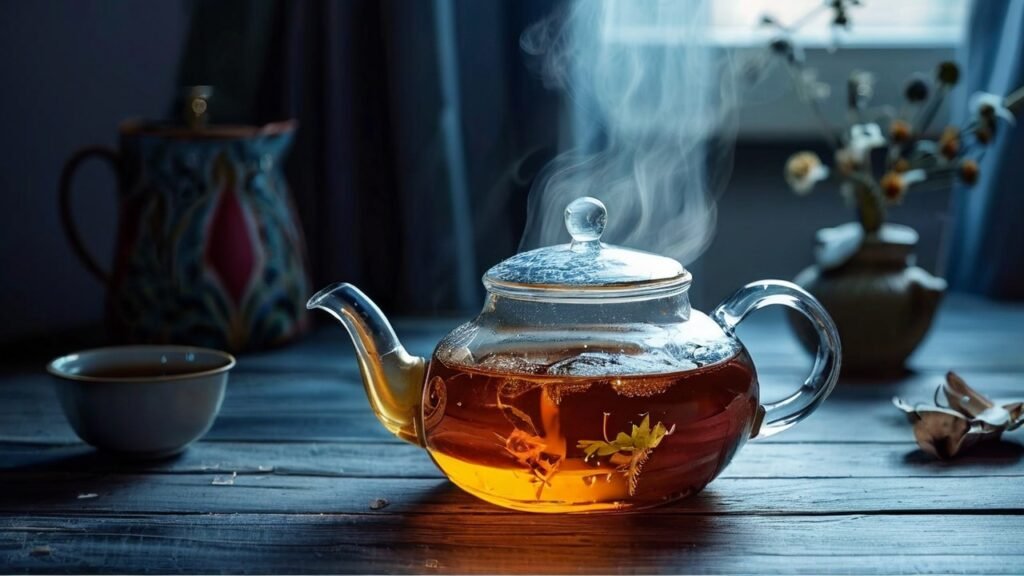
Disadvantages:
- Time-Consuming: In our fast-paced lives, warming the teapot can feel like an unnecessary step, especially for those seeking convenience.
- Perceived Complexity: For novice tea drinkers, the idea of warming the teapot may seem complicated, leading to hesitation in exploring tea culture.
- Alternative Methods: With modern brewing technologies, some may argue that pre-warming is no longer necessary.
Conclusion
As we’ve explored the nuances of warming the teapot, it becomes clear that this practice is rooted in tradition, science, and personal preference. While modern conveniences offer alternatives that may seem more practical, the act of warming the teapot embodies a mindfulness and appreciation for the tea-drinking experience.
Ultimately, whether or not to warm the teapot is a personal choice. For some, it’s a necessary step that enhances flavour and aroma, while for others, it may feel unnecessary in a world of quick fixes. However, as we continue to seek moments of tranquillity and connection in our
